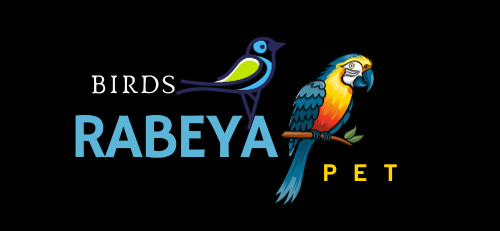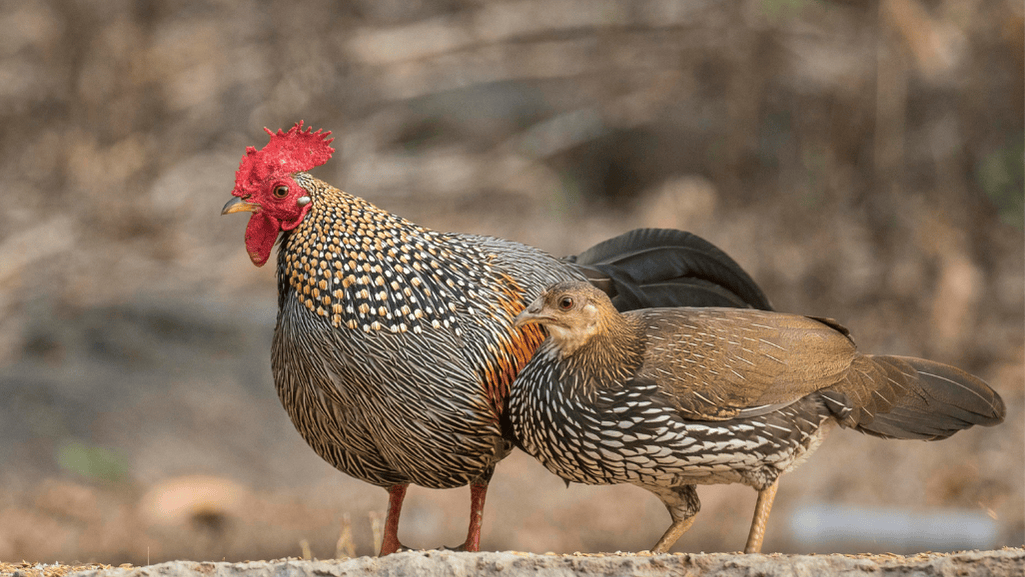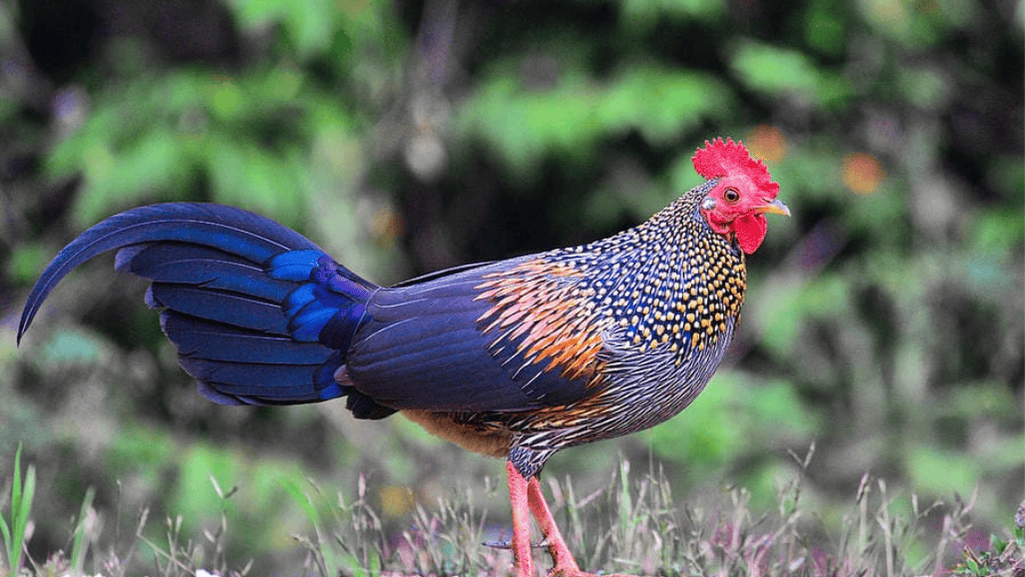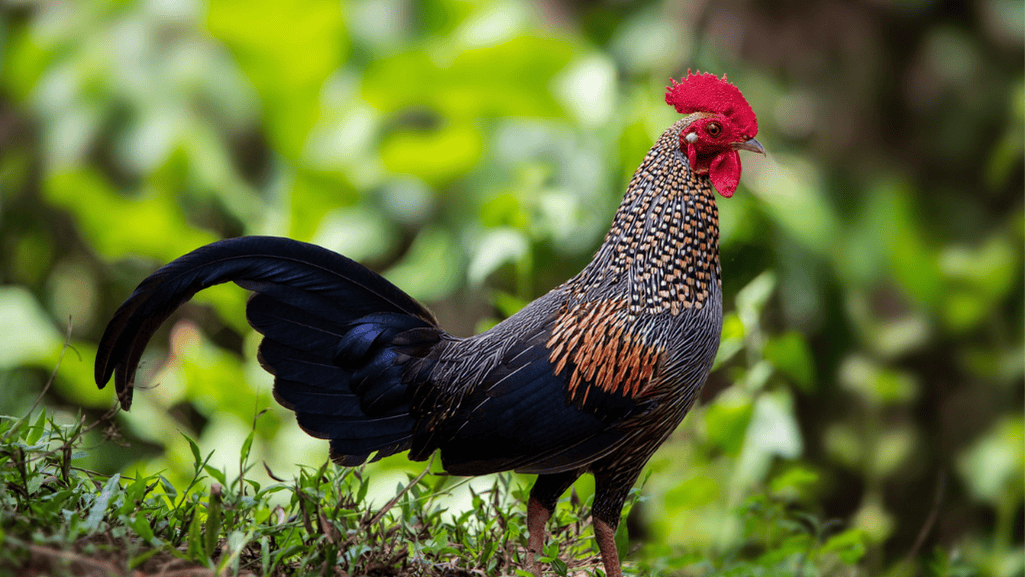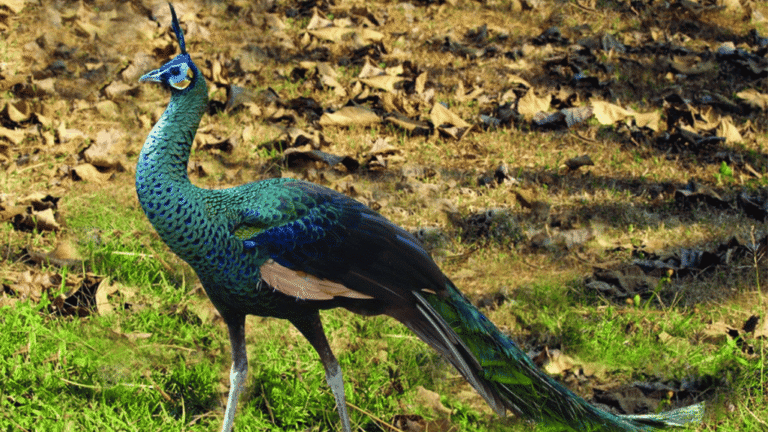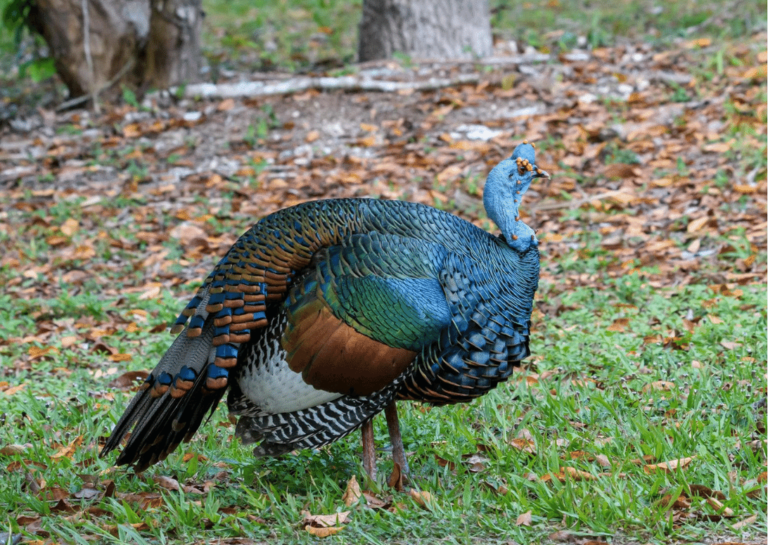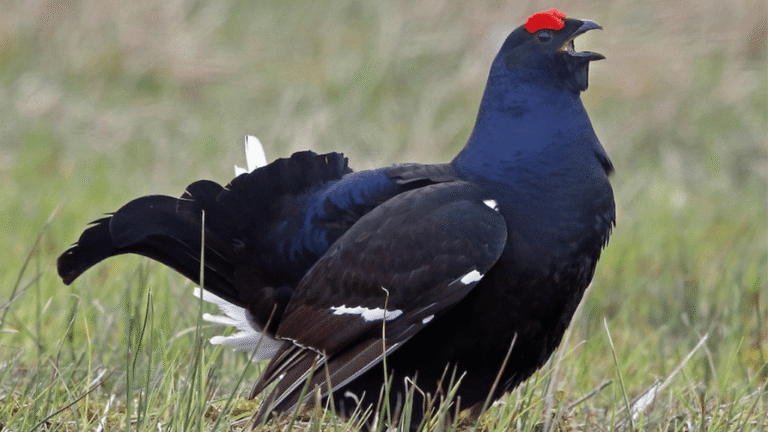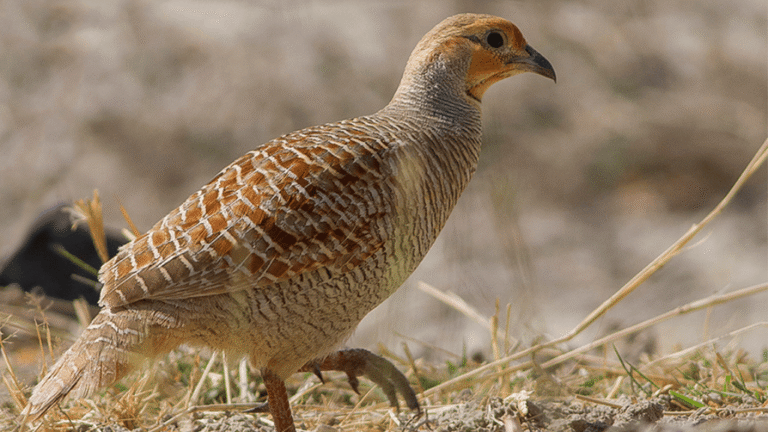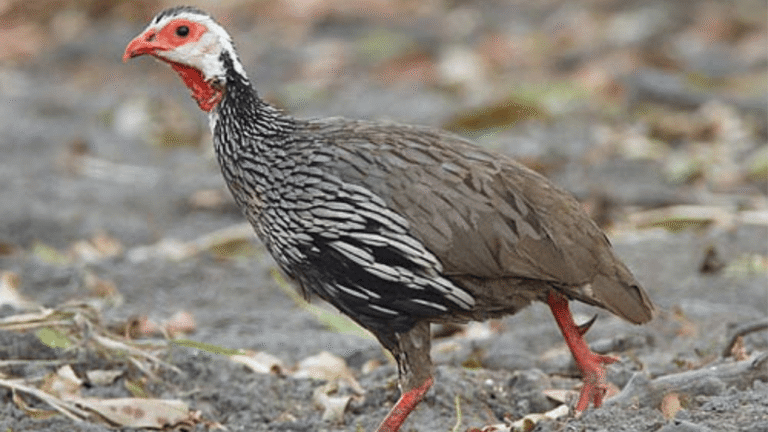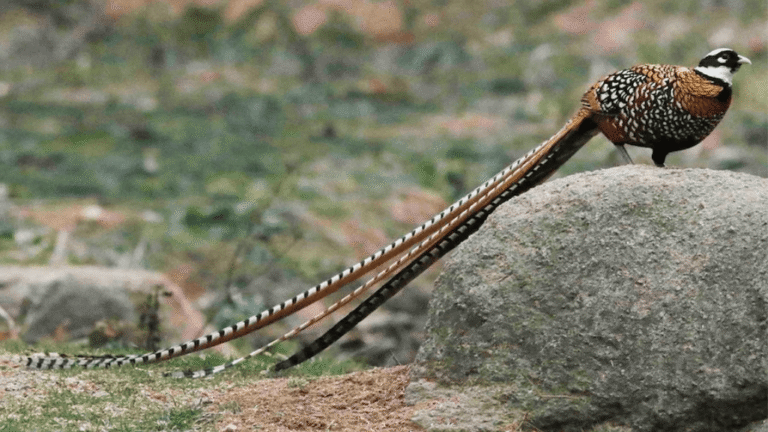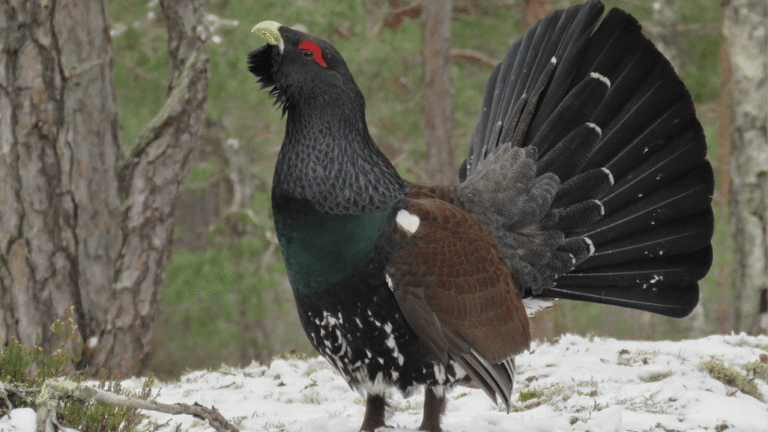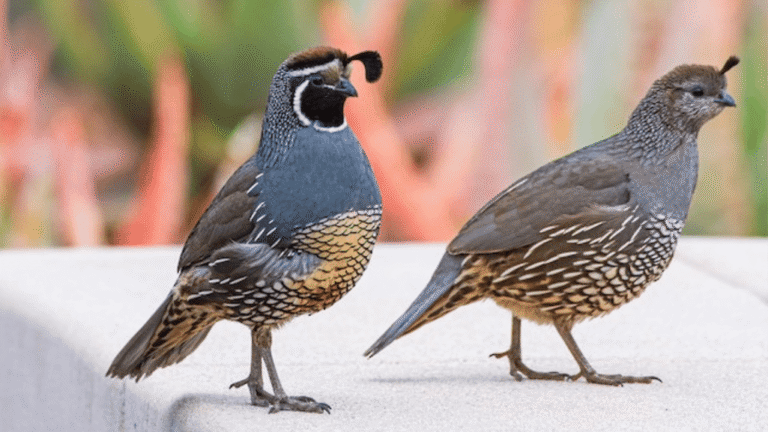The Grey Junglefowl, also known as Gallus sonneratii, is a wild species of domestic fowl endemic to the evergreen hill forests in southern and western India. Closely related to the red junglefowl, it is one of the wild ancestors of the domestic chicken breed. The Grey Junglefowl is known for its unique behavior, habitat, and diet, as well as its distinctive appearance with patterned plumage and vibrant colors. Despite being classified as “Least Concern” by the IUCN, the Grey Junglefowl still faces threats such as hunting and habitat loss.
Key Takeaways:
- Grey Junglefowl is a wild species of domestic fowl found in southern and western India.
- It is closely related to the red junglefowl, a wild ancestor of the domestic chicken breed.
- Grey Junglefowl have unique behavior, habitat, diet, and distinctive appearance.
- Despite being classified as “Least Concern,” they face threats from hunting and habitat loss.
- Conservation efforts are crucial for the preservation of the Grey Junglefowl.
Characteristics of the Grey Junglefowl
The Grey Junglefowl, also known as Gallus sonneratii, possesses distinct physical attributes that set it apart from other bird species. From its appearance to its lifespan, the Grey Junglefowl showcases remarkable qualities that contribute to its charm and uniqueness.
Grey Junglefowl Appearance
The male Grey Junglefowl displays an eye-catching plumage. It features a black cape adorned with golden/yellow color spots, greyish/brown waterproof feathers, and a vibrant red wattle and comb. The distinctive long dark feathers on its neck culminate in a small yellow plate, further enhancing its elegant appearance. In contrast, females have a more subdued look with brown and white streaks on their underparts.
Grey Junglefowl Size
In terms of size, the Grey Junglefowl is comparable to domestic chickens. On average, males measure around 75-80 centimeters in length, with an approximate weight of 1.5-2 kilograms. Females are slightly smaller, typically measuring around 60-65 centimeters in length and weighing around 1-1.5 kilograms.
Grey Junglefowl Plumage
The plumage of the Grey Junglefowl is a notable characteristic that reflects the bird’s natural beauty. With its distinct patterns and vibrant colors, the Grey Junglefowl’s plumage is a captivating sight to behold. The combination of black, grey/brown, yellow, and red creates a visually striking appearance that adds to the allure of this fascinating species.
Grey Junglefowl Lifespan
The Grey Junglefowl has an average lifespan of up to 10 years in the wild. Factors such as predation, habitat conditions, and disease can impact their longevity. However, with proper conservation efforts and protection of their natural habitats, these birds have the potential to thrive and contribute to their ecosystems for many years.
Habitat and Distribution of the Grey Junglefowl
The Grey Junglefowl, with its captivating appearance and unique behavior, can mainly be found in the picturesque landscapes of peninsular India. Its habitat extends into the states of Gujarat, Madhya Pradesh, and south Rajasthan.
This magnificent bird thrives in deciduous evergreen forests, where it finds solace in the dense thickets that cover the forest floors and open scrub areas. These habitats provide the Grey Junglefowl with the necessary resources for survival, including food and shelter.
Let’s take a closer look at the distribution of the Grey Junglefowl in the table below.
| Region | Distribution |
|---|---|
| Peninsular India | Mainly inhabited |
| Gujarat | Partially inhabited |
| Madhya Pradesh | Partially inhabited |
| South Rajasthan | Partially inhabited |
Diet and Foraging Behavior of the Grey Junglefowl
The Grey Junglefowl, being an omnivorous species, has a varied diet that includes both plant matter and small animals. This allows them to adapt to their natural environment and find sufficient sustenance.
When it comes to plant matter, the Grey Junglefowl feeds on bamboo seeds, grains, and berries. These items provide them with essential nutrients and energy. It is fascinating to observe how they navigate through the dense vegetation in search of these food sources.
However, the Grey Junglefowl’s diet is not limited to plant material alone. They also engage in foraging behavior to capture small animals, which adds an additional protein source to their meals. Prey items such as termites, spiders, ant larvae, and moths are commonly consumed by these birds.
The Grey Junglefowl showcases foraging behavior that emphasizes their adaptability and resourcefulness. They often forage in small mixed groups, consisting of both males and females, which allows them to collectively explore and exploit their habitat for food sources.
It is worth noting that the Grey Junglefowl’s foraging behavior not only contributes to their survival but also plays a crucial role in maintaining the ecological balance of their habitat. By consuming insects and other small animals, they help control population levels and preserve the overall health of the ecosystem.
Understanding the diet and foraging behavior of the Grey Junglefowl provides valuable insights into the species’ role in their natural environment. It highlights their ability to adapt to diverse food sources and their importance in maintaining the delicate balance of their ecosystem.
Grey Junglefowl Diet
| Plant Matter | Small Animals |
|---|---|
| Bamboo seeds | Termites |
| Grains | Spiders |
| Berries | Ant larvae |
| Moths |
Behavior and Reproduction of the Grey Junglefowl
The Grey Junglefowl, with its unique behavior and captivating reproductive process, offers a fascinating glimpse into the world of these vocal birds. Known for their distinctive calls, Grey Junglefowl can often be heard echoing through the forest early in the morning or at dusk. These calls serve as a means of communication within their social groups, which typically consist of a dominant male rooster and other birds.
Reproduction in Grey Junglefowl takes place between the months of February and May. During this time, the males go through a remarkable transformation, displaying vibrant plumage and flamboyant neck feathers to attract potential mates. Their striking appearance becomes a key factor in the courtship process.
The females play a vital role in the breeding cycle of Grey Junglefowl. They lay an average of 4-7 eggs and incubate them for a period of 21 days. The incubation period is crucial for the development of the eggs, ensuring the survival of the species. Males also contribute to the process by engaging in brooding and caregiving duties, sharing the responsibility of raising the next generation.
To provide a visual representation of the breeding cycle of Grey Junglefowl, the table below outlines the key stages and timings:
| Stage | Timeframe |
|---|---|
| Mating and Courtship | February to May |
| Egg Laying | March to June |
| Incubation | 21 days |
Understanding the behavior and reproductive patterns of Grey Junglefowl provides valuable insights into the intricate dynamics of this magnificent species. Their vocalizations, social structure, and breeding rituals exemplify the wonders of nature and the importance of preserving the biodiversity of our planet.
Conservation Status of the Grey Junglefowl
The Grey Junglefowl, although currently classified as “Least Concern” by the IUCN, faces several threats that jeopardize its long-term survival. These threats include hunting, habitat loss, and the use of its long neck hackle feathers for making fishing lures.
Hunting poses a significant risk to the Grey Junglefowl population. These birds are targeted for their meat, which is highly valued in certain regions. Additionally, their long neck hackle feathers are sought after for their use in creating fishing lures.
Habitat loss is another critical threat facing the Grey Junglefowl. Deforestation, human encroachment, and the conversion of forests into agricultural land are leading to the destruction and fragmentation of their natural habitat. As their habitat diminishes, the Grey Junglefowl’s population becomes more vulnerable and its chances of survival decrease.
Conservation efforts are crucial to safeguard the Grey Junglefowl and ensure its continued existence. These efforts should focus on implementing effective protection measures, such as establishing protected areas and enforcing hunting regulations. Additionally, initiatives to promote habitat conservation, reforestation, and sustainable land-use practices can help mitigate the impact of habitat loss.
By raising awareness, supporting scientific research, and engaging local communities, we can contribute to the conservation of the Grey Junglefowl and protect this remarkable bird for future generations to admire.
Threats to Grey Junglefowl
To summarize, the main threats to the Grey Junglefowl are:
- Hunting for meat and feathers
- Habitat loss caused by deforestation and human encroachment
| Threats | Solutions |
|---|---|
| Hunting | Enforce hunting regulations and raise awareness about the importance of conservation |
| Habitat loss | Establish protected areas, promote reforestation and sustainable land-use practices |
Conclusion
The Grey Junglefowl is a remarkable bird species that captivates with its unique behavior, habitat, and appearance. As a close relative of the wild ancestors of domestic chickens, it holds significant historical and ecological value. Despite being classified as “Least Concern” by the IUCN, the grey junglefowl still faces threats from hunting and habitat loss.
Conservation efforts are crucial to ensure the long-term survival of the grey junglefowl. By protecting their natural habitats and implementing measures to prevent illegal hunting, we can preserve the biodiversity and ecological balance they contribute to. It is essential to recognize their importance not just as a species, but also as a part of our natural heritage.
In summary, the Grey Junglefowl is a vital component of the ecosystems it inhabits. Its striking appearance, intricate behavior, and role in the domestication of chickens make it a species worth cherishing and protecting. By taking action to safeguard their habitats and raise awareness about their conservation needs, we can secure a future where the Grey Junglefowl thrives.
FAQ
What is the scientific name of the Grey Junglefowl?
The scientific name of the Grey Junglefowl is Gallus sonneratii.
Where is the Grey Junglefowl found?
The Grey Junglefowl is endemic to the evergreen hill forests in southern and western India.
What does the Grey Junglefowl look like?
The male Grey Junglefowl has a black cape with golden/yellow color spots, greyish/brown waterproof plumage, a red wattle and comb, and long dark feathers on its neck. Females have a duller appearance with brown and white streaks on their underparts.
What does the Grey Junglefowl eat?
The Grey Junglefowl is an omnivore, feeding on bamboo seeds, grains, termites, spiders, ant larvae, moths, and berries.
How long do Grey Junglefowls live?
Grey Junglefowls can live up to 10 years.
How do Grey Junglefowls reproduce?
Breeding occurs between February and May, with the males displaying vibrant plumage and flamboyant neck feathers to attract females. Females lay 4-7 eggs and incubate them for 21 days. Males often contribute to brooding and caregiving duties.
What is the conservation status of the Grey Junglefowl?
The Grey Junglefowl is currently classified as “Least Concern” by the IUCN, but it faces threats from hunting and habitat loss.

